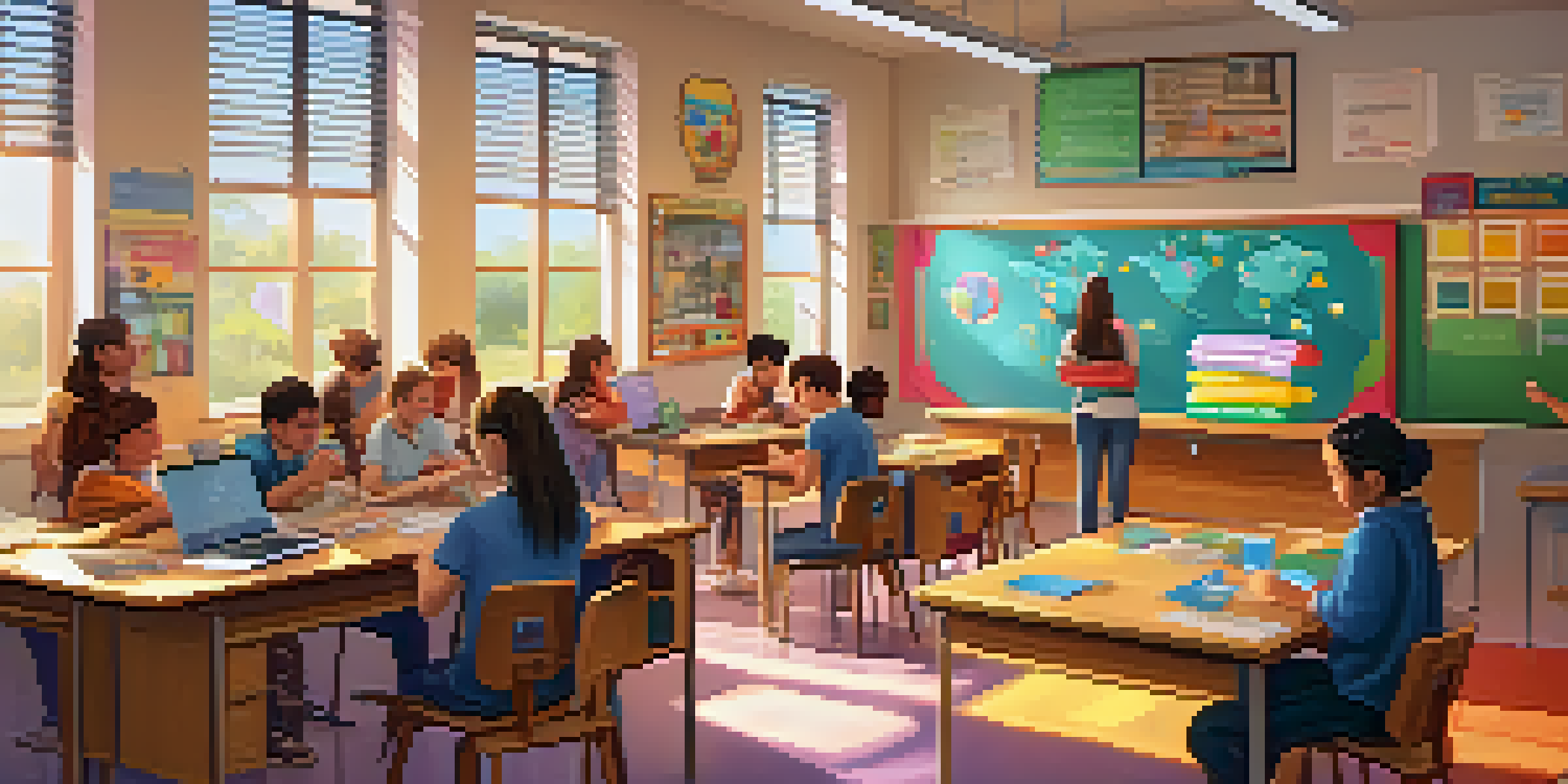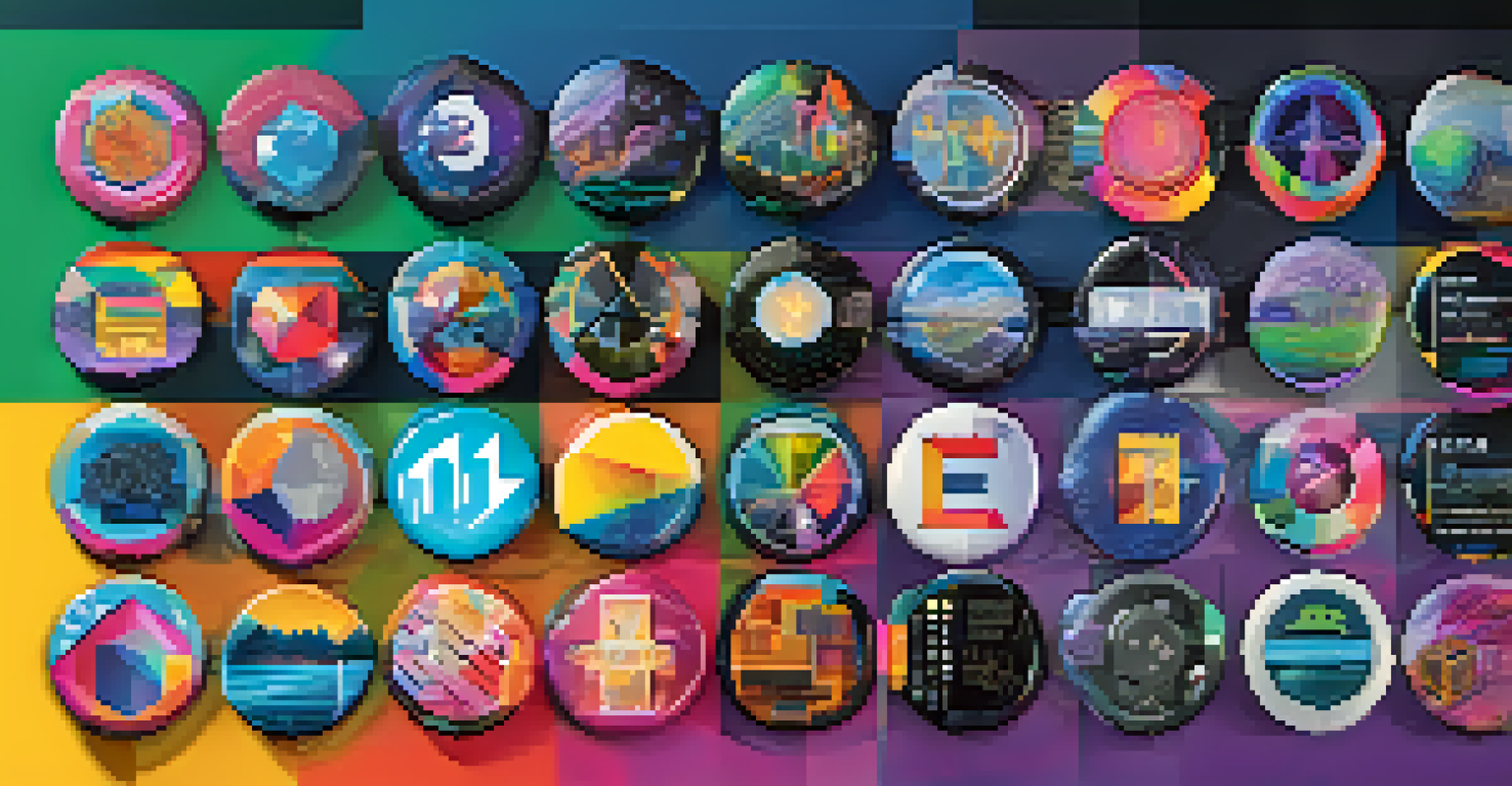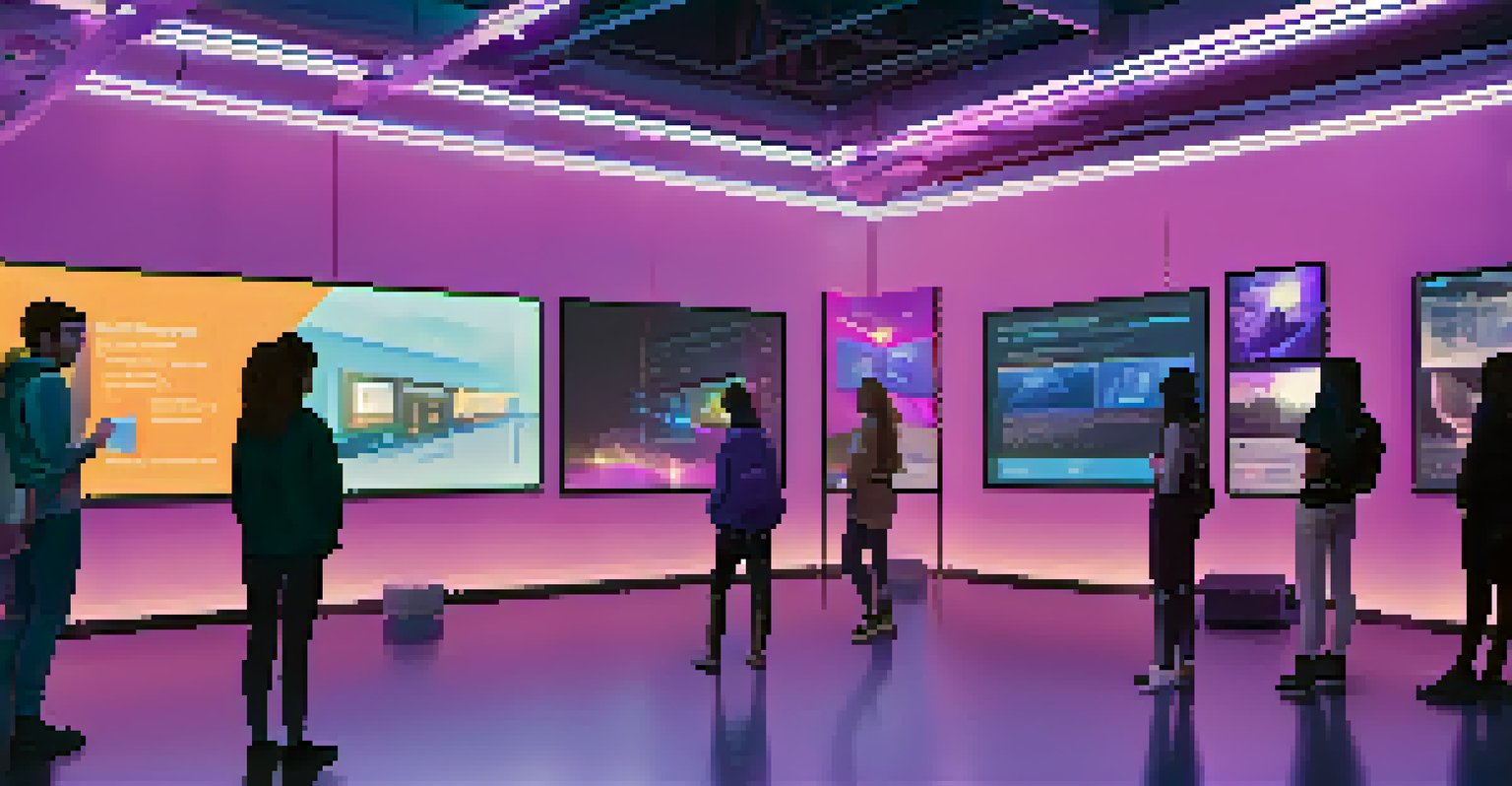Gamification in Education: The Role of NFTs in Learning

Understanding Gamification in Education
Gamification refers to incorporating game elements into non-game contexts, like education. This approach aims to boost student engagement and motivation by making learning feel more interactive and enjoyable. By using points, badges, and leaderboards, educators can create a more dynamic learning environment that mirrors the excitement of gaming.
Games are the most elevated form of investigation.
For example, a math teacher might implement a point system where students earn points for completing assignments or participating in class discussions. This not only encourages participation but also fosters a sense of achievement as students track their progress. Gamification transforms mundane tasks into rewarding challenges, making learning a more enjoyable experience.
Ultimately, gamification nurtures a positive learning atmosphere, encouraging students to take risks and embrace challenges. This method is particularly beneficial for younger learners, who often thrive on play and competition. As we delve into the role of NFTs, we’ll see how these digital assets fit into the gamification puzzle.
What Are NFTs and How Do They Work?
NFTs, or Non-Fungible Tokens, are unique digital assets verified using blockchain technology. Unlike cryptocurrencies, which are interchangeable, each NFT has distinct attributes, making it one-of-a-kind. This uniqueness opens up exciting possibilities in education, particularly in rewarding and recognizing student achievements.

For instance, an art teacher could issue NFTs as certificates for students who complete a painting assignment. Each NFT would represent a digital badge that students can showcase in their portfolios, signifying their accomplishments. This not only adds value to their work but also introduces a modern twist to traditional forms of recognition.
Gamification Boosts Engagement
Incorporating game elements like points and badges in education significantly enhances student motivation and participation.
Understanding NFTs is crucial for educators looking to adopt innovative teaching methods. By integrating NFTs into gamified learning, teachers can enhance the appeal of their curriculum and provide students with tangible rewards for their efforts. This creates a win-win scenario where students feel valued and motivated to learn.
The Intersection of Gamification and NFTs
Combining gamification with NFTs creates a powerful educational tool that enhances student engagement. When students earn NFTs as rewards for their achievements, they gain a sense of ownership over their learning journey. This intersection not only incentivizes participation but also fosters a community of learners who celebrate each other’s successes.
In the world of education, the greatest reward is the joy of learning.
Imagine a classroom where students earn NFTs for completing challenges, such as mastering a new concept or collaborating on a project. These NFTs can then be displayed in a digital gallery or traded among peers, creating a sense of camaraderie and healthy competition. This model encourages collaboration while empowering students to take charge of their learning.
Furthermore, integrating NFTs can make learning more relevant to today’s digital natives. By using technology that resonates with them, educators can bridge the gap between traditional education and the modern digital landscape. This approach not only prepares students for the future but also makes learning an exciting adventure.
Benefits of Using NFTs in Gamified Learning
Using NFTs in gamified learning brings numerous benefits, starting with enhanced motivation. When students know that they can earn unique digital assets, their desire to participate increases significantly. This motivation can lead to improved academic performance and a greater love for learning.
Moreover, NFTs can serve as a powerful tool for showcasing student achievements. Unlike traditional certificates that may gather dust, NFTs can be shared and displayed online, highlighting students' hard work and creativity. This visibility can boost their confidence and encourage them to pursue further learning opportunities.
NFTs Recognize Student Achievements
Non-Fungible Tokens provide unique digital accolades for students, adding value to their accomplishments and enhancing their portfolios.
Additionally, the use of NFTs promotes digital literacy among students. As they engage with this technology, they learn valuable skills for navigating the increasingly digital world. This focus on technology prepares them for future careers while keeping the learning process relevant and engaging.
Challenges in Implementing NFTs in Education
Despite the many advantages, implementing NFTs in education isn’t without challenges. One primary concern is the accessibility of technology; not all students may have equal access to devices or internet connections. This disparity can create a digital divide, making it essential for educators to ensure inclusivity when adopting such tools.
Additionally, there are concerns regarding the environmental impact of blockchain technology used for NFTs. As awareness of sustainability grows, educators must consider how to implement NFTs in a way that aligns with eco-friendly practices. Finding solutions that balance innovation with environmental responsibility is crucial.
Furthermore, educators need to be mindful of the potential for distraction. While NFTs can enhance the learning experience, they may also divert attention away from the core educational objectives. Striking the right balance between gamification and focused learning is key to ensuring that these tools serve their intended purpose.
Practical Applications of NFTs in Educational Settings
Practical applications of NFTs in education are already emerging, showcasing their potential to transform learning. For example, schools can create NFT-based rewards systems where students earn tokens for completing projects, participating in discussions, or achieving academic milestones. These tokens can then be exchanged for real-world rewards or special privileges.
Another exciting application is the use of NFTs for digital portfolios. Students can compile their best work into NFTs, creating a unique collection that highlights their skills and accomplishments. This not only fosters pride in their achievements but also provides a valuable tool for college applications or job interviews.
Challenges of Implementing NFTs
Despite their benefits, integrating NFTs in education poses challenges such as technology accessibility and the potential for distraction.
Additionally, educators can collaborate with artists to create educational NFTs that encapsulate lessons or concepts in creative ways. These NFTs could include interactive elements that encourage exploration and deeper understanding. By incorporating practical applications of NFTs, educators can enhance the learning experience while preparing students for a digital future.
The Future of Gamification and NFTs in Education
Looking ahead, the future of gamification and NFTs in education appears bright. As technology continues to evolve, these tools will likely become more accessible and integrated into various learning environments. This shift could lead to a more personalized and engaging educational experience for students of all ages.
Moreover, as more educators adopt these innovative strategies, we may see a cultural shift in how education is perceived. Learning could become synonymous with fun and creativity, breaking away from traditional models that often stifle curiosity. This transformation has the potential to redefine educational success and foster a generation of lifelong learners.

Ultimately, the combination of gamification and NFTs represents a promising frontier in education. By embracing these tools, educators can create vibrant, interactive learning experiences that inspire students to explore, create, and grow. As we move forward, the possibilities for innovation in education are limitless.